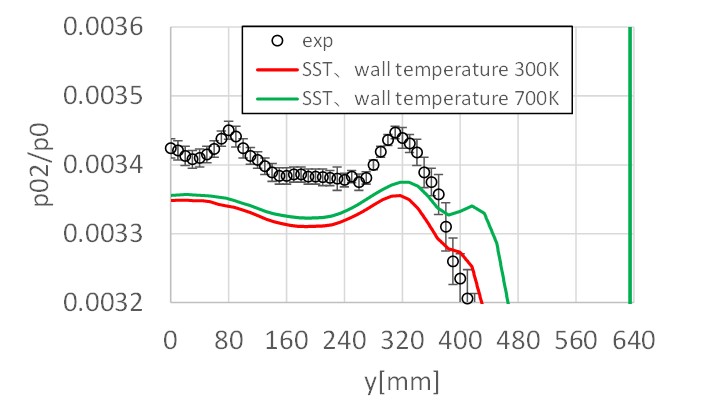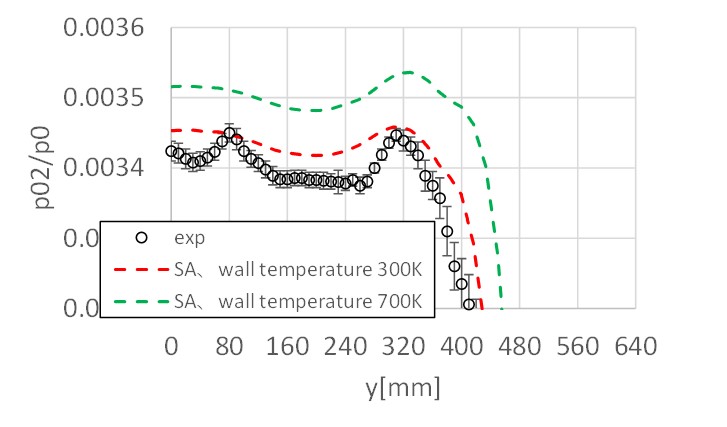Aerodynamic testing technology for reentering capsules
JAXA Supercomputer System Annual Report April 2020-March 2021
Report Number: R20EA1403
Subject Category: Aeronautical Technology
- Responsible Representative: Shigeru Hmamoto, Aeronautical Technology Directorate, Aerodynamics Research Unit
- Contact Information: Keisuke Fujii(keisuke@chofu.jaxa.jp)
- Members: Yoshiki Takama, Hiroya Toriida, Keisuke Fujii
Abstract
To enhance hypersonic aerodynamic testing technology especially for reentering vehicles through developing understanding about the hypersonic wind tunnel nozzle flow which affects a lot estimation error to the flight characteristics and through defining the ability in predicting RCS jet interaction.
Reference URL
N/A
Reasons and benefits of using JAXA Supercomputer System
Since it perfectly suits the requirement in calculating heavy RCS jet interaction flow field and the hypersonic nozzle flow. Useful tools such as FaSTAR is another.
Achievements of the Year
Flow inside JAXA 1.27m hypersonic wind tunnel was numerically solved. The effects of grid and turbulence model were investigated. The result revealed that 1) the upstream nozzle geometry should be reproduced as much as possible, and 2) the effect of wall temperature variation in SA model may explain the experimental data of p02/p0 (p0:reservoir pressure, p02:pitot pressure) at the nozzle exit, as shown Figs 1 and 2.
Publications
N/A
Usage of JSS
Computational Information
- Process Parallelization Methods: MPI
- Thread Parallelization Methods: N/A
- Number of Processes: 32 - 480
- Elapsed Time per Case: 50 Hour(s)
Resources Used(JSS2)
Fraction of Usage in Total Resources*1(%): 0.10
Details
Please refer to System Configuration of JSS2 for the system configuration and major specifications of JSS2.
| System Name | Amount of Core Time(core x hours) | Fraction of Usage*2(%) |
|---|---|---|
| SORA-MA | 603,677.96 | 0.11 |
| SORA-PP | 2,732.05 | 0.02 |
| SORA-LM | 5.00 | 0.00 |
| SORA-TPP | 0.00 | 0.00 |
| File System Name | Storage Assigned(GiB) | Fraction of Usage*2(%) |
|---|---|---|
| /home | 8.34 | 0.01 |
| /data | 1,884.45 | 0.04 |
| /ltmp | 1,611.33 | 0.14 |
| Archiver Name | Storage Used(TiB) | Fraction of Usage*2(%) |
|---|---|---|
| J-SPACE | 1.36 | 0.04 |
*1: Fraction of Usage in Total Resources: Weighted average of three resource types (Computing, File System, and Archiver).
*2: Fraction of Usage:Percentage of usage relative to each resource used in one year.
Resources Used(JSS3)
Fraction of Usage in Total Resources*1(%): 0.20
Details
Please refer to System Configuration of JSS3 for the system configuration and major specifications of JSS3.
| System Name | Amount of Core Time(core x hours) | Fraction of Usage*2(%) |
|---|---|---|
| TOKI-SORA | 1,084,101.36 | 0.23 |
| TOKI-RURI | 1,121.76 | 0.01 |
| TOKI-TRURI | 0.00 | 0.00 |
| File System Name | Storage Assigned(GiB) | Fraction of Usage*2(%) |
|---|---|---|
| /home | 8.34 | 0.01 |
| /data | 1,884.45 | 0.03 |
| /ssd | 78.68 | 0.04 |
| Archiver Name | Storage Used(TiB) | Fraction of Usage*2(%) |
|---|---|---|
| J-SPACE | 1.36 | 0.04 |
*1: Fraction of Usage in Total Resources: Weighted average of three resource types (Computing, File System, and Archiver).
*2: Fraction of Usage:Percentage of usage relative to each resource used in one year.
JAXA Supercomputer System Annual Report April 2020-March 2021




